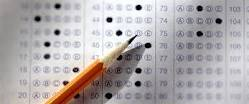Next steps: Deferred under an Early Plan
Posted on Tue, 12/13/2011 - 17:43Today, we look at next steps for students who have been deferred under an under early decision (ED), early action (EA), or restrictive early action (REA) plan. Deferred under Early Decision, Early Action, or Restrictive Early Action If deferred under ED, EA or REA, students are placed in the regular admission pool for later consideration. You do not have to reapply, but there are some actions you should be taking at the school where you have been deferred if that school remains a top choice for you:
Next steps: An Early Acceptance
Posted on Mon, 12/12/2011 - 17:03Every day this week, we'll be posting a series of "Next Steps" for students who have applied early and are receiving their notifications. First up, next steps for students who have been admitted -- Congratulations! -- under early decision (ED), early action (EA), or restrictive early action (REA). But first let us say that we're so happy you will have one more thing to celebrate over the holiday break! And when you catch your breath, here are some steps to address... Early Action and Restrictive Early Action EA and REA programs are nonbinding and students have until May 1 to inform the college whether they will enroll.
- If the EA or REA school where you have been admitted is your first choice, you may want to inform them of your intention to attend and withdraw any applications to the other schools on your list. (We'll have more to say about this later in the week.)
- If you are not sure you will attend the EA or REA school or your family will want to review and compare multiple financial aid awards, complete the applications to the other schools on your list. (See the note on financial aid at the end of this post.)
Early Decision ED programs are binding and students must enroll if accepted.
Does Early Decision Fill Most of the Seats in the Freshman Class?
Posted on Fri, 12/09/2011 - 20:33Does Early Decision Fill Most of the Seats in the Freshman Class? Get ready for a slew of headlines trumpeting the arrival of decisions for those who applied under early action or early decision plans. Some students have already begun to receive their decisions for this admission season and more will hear in the coming week. For students who opted to take advantage of the additional time afforded by applying regular decision, this time may nevertheless be worrisome as the media trumpet stories about the record numbers of early applicants. One of the most persistent storylines is that early decision fills most of the seats in the freshman class. NOT! Read on in this excerpt from the book to understand the real story: “The college you’re applying to has filled half its freshman class with early decision applicants!” You may have heard things like this and worried there won’t be enough room left if you apply under regular decision. But this is a case where the numbers are deceiving. Let’s do the math. The question is not how many seats are being taken up in the class by applicants who applied under early decision. The question is, what percentage of the school’s total admission offers is already gone? It sounds incredible, but it’s true that even when half the seats are filled with ED applicants, fewer than half the acceptances have been given out. Here’s how it works.
The Standardized Test Cheating Scandal
Posted on Thu, 12/08/2011 - 21:14 In the wake of the Long Island, New York, standardized-test cheating scandal, Jacques Steinberg at the New York Times' Choice blog has posted an informative dialogue with Ray Nicosia, director of testing integrity for the Educational Testing Service, which administers the SAT. Twenty students now face charges of fraud and impersonation in a scandal encompassing both the SAT and ACT. The students either paid others to take the tests for them or impersonated students in taking the tests. In Questions for the SAT’s Top Cop, Steinberg and Nicosia discuss the testing service's security measures as well as how students -- and even parents -- can report irregularities or suspicions of cheating.
In the wake of the Long Island, New York, standardized-test cheating scandal, Jacques Steinberg at the New York Times' Choice blog has posted an informative dialogue with Ray Nicosia, director of testing integrity for the Educational Testing Service, which administers the SAT. Twenty students now face charges of fraud and impersonation in a scandal encompassing both the SAT and ACT. The students either paid others to take the tests for them or impersonated students in taking the tests. In Questions for the SAT’s Top Cop, Steinberg and Nicosia discuss the testing service's security measures as well as how students -- and even parents -- can report irregularities or suspicions of cheating.
College Admission Profiled in The Almanac
Posted on Wed, 12/07/2011 - 18:41Thank you to Jeff Carr for the terrific feature on College Admission in this week's Almanac -- Breaking open the college admission process: VanDeVelde discovers it's more logical, sane, positive than expected. You really "got" the book and its messages!
Community Service: How is it really valued?
Posted on Mon, 12/05/2011 - 23:06Yet another article is making the rounds aimed at amping up the pressure on students and their families. Headlined "Community Service Work Increasingly Important for College Applicants," it appeared in the US News and World Report Money section. Promoting the results of a "scientific report," it states that "admission officers place a high value on a student's long-term commitment to a cause or organization." Of course, that's true at face value. But the article goes on to imply that that "cause or organization" must be community service.
As these articles usually are, it's confusing and provocative, offering advice such as this: "Applicants need to take care in how they position their volunteer activities." The implicit message: You had better have community service on your list of extracurricular activities or you will suffer consequences.
Deans do place a high value on consistent commitment to a cause or organization -- or activity, pursuit or involvement -- but that does not translate to community service specifically being necessary to add to the list of everything else students are doing. It is one of the many ways students' lists of activities can reflect their commitments and passions and is not, for most colleges, a stand-alone by itself.
Counselor of the Month: Marcia Hunt, Pine Crest School
Posted on Sat, 12/03/2011 - 02:27 Marcia Hunt, Director of College Counseling at Florida's Pine Crest School, joins us this month to share her advice and insight on everything from her favorite resources for students and parents to some do's and don'ts that will help them get the most from the relationship with their counselors. Read more in True Admissions! here.
Marcia Hunt, Director of College Counseling at Florida's Pine Crest School, joins us this month to share her advice and insight on everything from her favorite resources for students and parents to some do's and don'ts that will help them get the most from the relationship with their counselors. Read more in True Admissions! here.
Marcia Hunt, Pine Crest School
Posted on Sat, 12/03/2011 - 02:24 Marcia Hunt, Director of College Counseling at Florida's Pine Crest School, joins us this month to share her advice and insight on everything from her favorite resources for students and parents to some do's and don'ts that will help them get the most from the relationship with their counselors.
Marcia Hunt, Director of College Counseling at Florida's Pine Crest School, joins us this month to share her advice and insight on everything from her favorite resources for students and parents to some do's and don'ts that will help them get the most from the relationship with their counselors.
Hunt has been counseling students for twenty-nine years at Pine Crest School, which has about 2,600 students, pre-K through 12th grade, on campuses in Fort Lauderdale and Boca Raton. A graduate of Syracuse University, where she was a political science major, she also holds a masters in counseling from Canisius College.
Married to an attorney and mother to two children, now grown, at one point, Ms. Hunt was also ranked in women's doubles tennis in Florida. We think she should write a book on time management!
The Global Worldview of College Campuses
Posted on Fri, 12/02/2011 - 21:16 A global worldview is an attribute that many students today seek when they look at colleges. Edward Fiske, author of The Fiske Guide to Colleges, in an article in the Huffington Post, discusses the challenge of globalization and how American colleges are meeting it -- opening international outposts and admitting more students from abroad -- in this informative article Globalization -- What It Means for Colleges and Students.
A global worldview is an attribute that many students today seek when they look at colleges. Edward Fiske, author of The Fiske Guide to Colleges, in an article in the Huffington Post, discusses the challenge of globalization and how American colleges are meeting it -- opening international outposts and admitting more students from abroad -- in this informative article Globalization -- What It Means for Colleges and Students.
Jennifer Delahunty, Kenyon College
Posted on Thu, 12/01/2011 - 19:59 This month, we have turned the interview tables on Jennifer Delahunty of Kenyon College to ask her our 5 Questions for the Dean. In addition to her work as the Dean of Admissions and Financial Aid at the 1600-student Gambier, Ohio, campus, Delahunty is a well-known writer on all things admissions. (Full disclosure: we have been lucky enough to participate in one of her editorial projects!) In 2006, an op-ed she penned for the New York Times on gender issues in admissions, To All the Girls I've Rejected, went viral. It's just one example of the honesty and transparency that she brings to the admission process in all that she does. Join her here to gain some of her trademark insight into Kenyon -- the classroom, the campus, and the admission office -- and some of her sage advice for parenting through the process.
This month, we have turned the interview tables on Jennifer Delahunty of Kenyon College to ask her our 5 Questions for the Dean. In addition to her work as the Dean of Admissions and Financial Aid at the 1600-student Gambier, Ohio, campus, Delahunty is a well-known writer on all things admissions. (Full disclosure: we have been lucky enough to participate in one of her editorial projects!) In 2006, an op-ed she penned for the New York Times on gender issues in admissions, To All the Girls I've Rejected, went viral. It's just one example of the honesty and transparency that she brings to the admission process in all that she does. Join her here to gain some of her trademark insight into Kenyon -- the classroom, the campus, and the admission office -- and some of her sage advice for parenting through the process.







